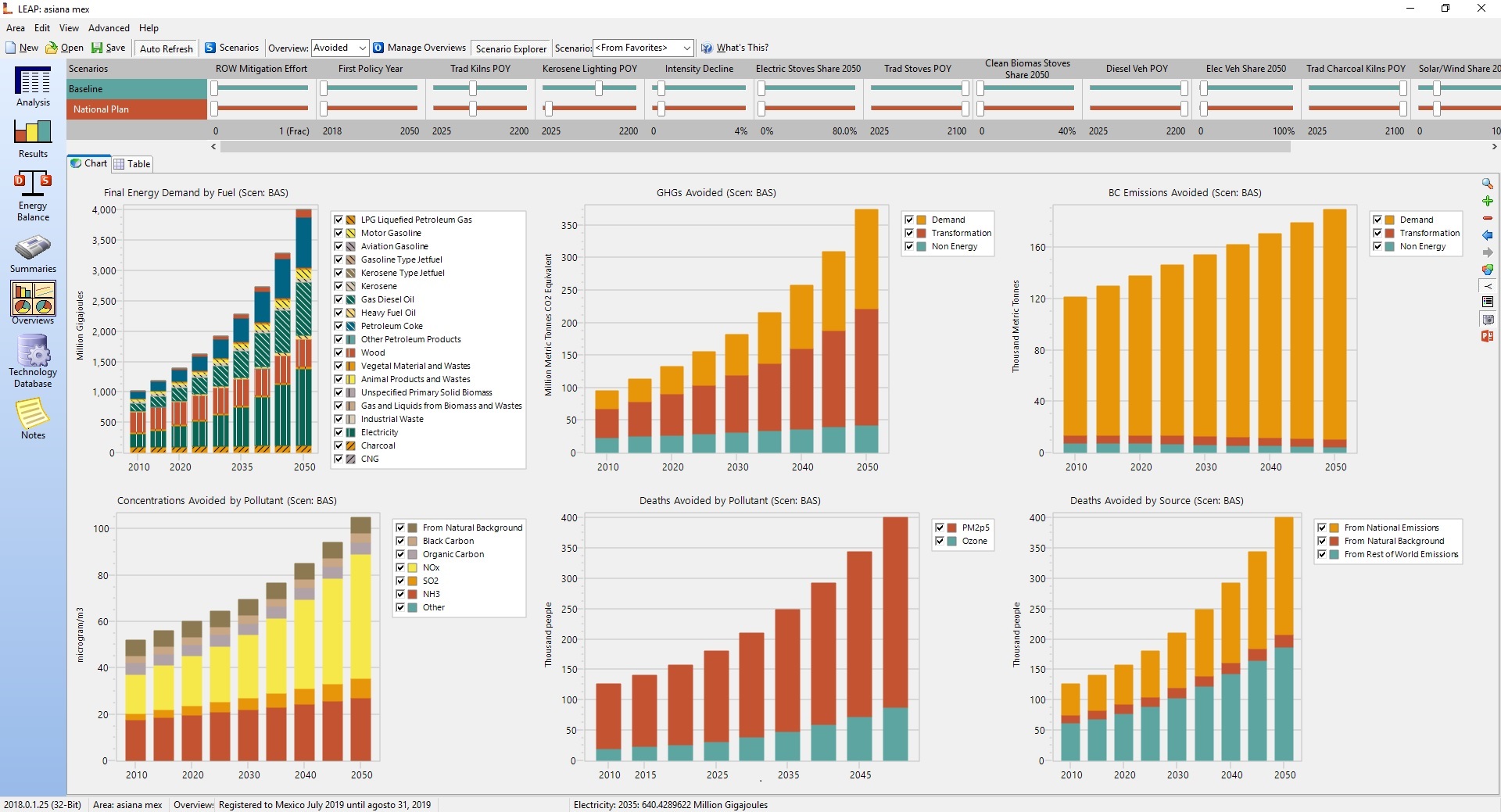Through its regulatory framework and international commitments, Mexico has vowed to fight climate change by significantly cutting down greenhouse gas emissions across its economy. As in many other countries, the production and use of energy represents a significant share of greenhouse gas emissions, with around 70% of Mexico’s emissions associated with this sector. Faced with a rapidly changing sector and the necessity to design and implement evidence-based mitigation policies, it is crucial for governmental institutions to be equipped with solid data and modelling capacities, which allow them to define more ambitious mitigation measures that adequately consider characteristics of the local context, technologies’ mitigation potential, and possible trade-offs.
In the context of the upcoming revision of Mexico’s Nationally Determined Contribution (NDC), and based on an initiative from the Mexican Ministry of Environment and Natural Resources (SEMARNAT), the GIZ project “Enhancing the coherence of climate and energy policies in Mexico” (CONECC) provided support for the organization of a training course entitled “Scope and potential of LEAP energy-climate modelling environment for the analysis of Nationally Determined Contributions”. The course aimed to build the capacities of governmental decision-makers from the Mexican energy and climate sectors on the use of the Long-range Energy Alternatives Planning System (LEAP), a modelling software which can be used to assess the feasibility as well as economic and environmental impacts of various climate mitigation scenarios for the energy sector, taking into account a detailed representation of a country’s demand and supply patterns.

The training took place in SEMARNAT between the 8th and 12th of July, and was delivered by three expert instructors from Fundación Bariloche and the Stockholm Environment Institute, among them LEAP creator Charlie Heaps. Participants included representants from both the environment (SEMARNAT, INECC, ASEA) and energy (SENER, CENACE, INEEL, CONUEE) sectors.
Thanks to a mix of presentations and hands-on practice sessions, participants were able to get an in-depth overview of LEAP functionalities, such as building and optimizing scenarios, as well as analyzing and presenting the results to decision-makers. Improving energy efficiency, expanding the use of renewable energy, and electrifying key sectors of the economy, were among the mitigation strategies which were modelled and analyzed using the software. LEAP’s latest version also features an Integrated Benefits Calculator (IBC), which allows quantification of the impacts on health and land-use of the analysed mitigation measures. Finally, participants got a chance to present the modelling work being done within their respective institutions, as well as exchange and learn from each other on the challenges they face and how to address them. The training highlighted the need to strengthen the collaboration between the energy and climate sectors in the process of updating the NDC. In this regard, harmonizing modelling methodologies and assumptions between both sectors appeared as crucial to contribute more effectively to the definition of climate targets.
Looking ahead, the CONECC project will continue building bridges between the energy and climate sectors, to increase the contribution of the former to the fulfilment of Mexico’s NDC. Of particular interest, CONECC is currently supporting SEMARNAT in evaluating the mitigation potential of energy efficiency in Mexico, with the aim of incorporating it into the next update of the NDC.

The GIZ project “Enhancing the coherence of climate and energy policies in Mexico” (CONECC) is financed by the German Federal Ministry for the Environment, Nature Conservation and Nuclear Safety (BMU) through its International Climate Initiative (IKI). For more information, please contact Jonas.russbild@giz.de
